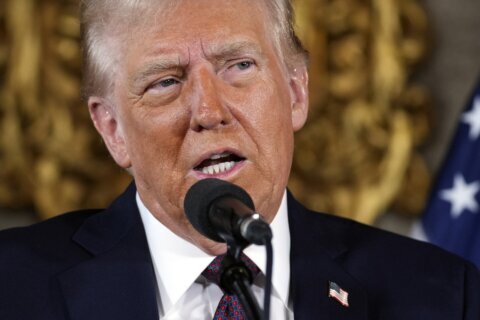NEW YORK (AP) — Electric vehicle demand is expected to keep rising this year, but uncertainty over policy changes and tariffs is clouding the forecast.
S&P Global Mobility expects global sales of 15.1 million battery electric vehicles in 2025, which would mark a 30% jump. Battery electric vehicles are expected to make up 16.7% of the market share for light vehicles.
Tesla, BYD of China, and other manufacturers face big unknowns in 2025. Donald Trump’s presidency could mean big policy shifts in tax and other incentives for both electric vehicle makers and consumers. The threat of tariffs on imports and retaliatory tariffs globally, could further complicate production and sales for electric vehicles.
“There’s just a lot of uncertainty in the air,” said Stephanie Brinley, associate director of auto intelligence at S&P Global Mobility. “It’s not an environment where you want to necessarily go gangbusters.”
In the U.S., consumers can currently claim a federal tax benefit of up to $7,500 for certain new electric vehicles. Carmakers also benefitted from some federal support for electric vehicle production and infrastructure. It’s possible for all of that to get cut under President Trump.
Trump condemned the federal tax credit for electric vehicles while campaigning for the presidency. He called it part of a “green new scam” that would would hurt the auto industry. Still, the incoming administration is expected push for broader deregulation of industries, which could potentially help carmakers.
Some of the larger electric vehicle makers had a mixed 2024 even with benefits for consumers and manufacturers. Tesla sales slipped 1.1%, its first annual sales drop in more than a dozen years. Rivian’s deliveries rose 2.9%.
Tariffs are another threat to the industry. Production takes place globally, with parts getting imported and exported throughout the process. Trump has threatened to tax imports from Mexico, Canada, China and elsewhere, which would likely result in retaliatory tariffs.
China is the largest market for electric vehicles, followed by the U.S. Within the U.S., Tesla is the dominant electric vehicle maker, with about 50% of the market share.
Automakers are in a wait-and-see position along with many other industries to see whether Trump carries out the threat of rescinding tax credits and implementing tariffs.
The broader auto industry is proceeding with caution. Overall, S&P Global Mobility expects that light vehicle production will have slid 1.6% in 2024 and will fall another 0.4% in 2025.
That’s a result of automakers better matching production and demand. Overall light vehicle sales are still expected to rise 1.7% in 2025.
The ongoing transition to electric vehicles also plays a role in more tempered production. Companies like Ford and General Motors are shifting production capacity to electric vehicles in some cases instead of adding more capacity.
Copyright © 2025 The Associated Press. All rights reserved. This material may not be published, broadcast, written or redistributed.







